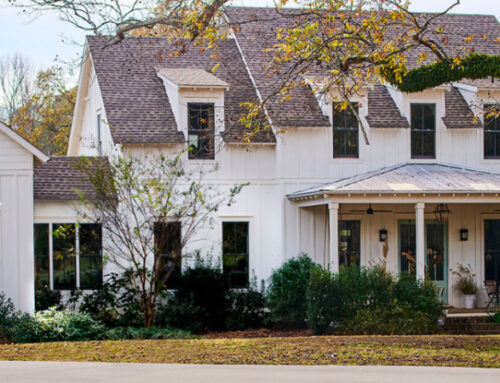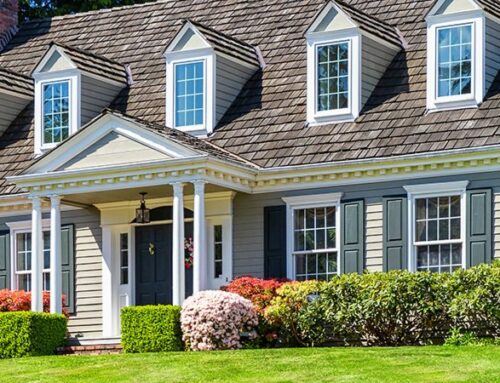She’s been there your entire life. With energy, fervor and zest she took on all of life’s challenges and nurtured you into the amazing person that you are. However, lately Mom has had a little harder time moving about, has been a little bit forgetful and increasingly more concerned for her safety. And although she’s aware that living on her own makes you nervous, she’s been on her own for so long that moving under someone else’s roof and under their rules isn’t a very desirable future.
Many people are finding themselves in this situation more and more. AARP reports that 90% of seniors interviewed wish to remain in their own home and 71% will spend the remainder of their lives in the home they celebrated their 65th birthday in. And even if home healthcare was affordable, finding the right person to take care of Mom is a notable challenge. For years, families have done the best they can to help maturing adults enjoy their twilight years in their own homes. Today, more than any time prior, these lifestyle changes are becoming a lot more achievable with Smart Homes and the Internet of Things. The increased ubiquity of Smart Home devices in homes all across America has been motivated by their affordability and intuitiveness. Many of the devices that could be used to help your aging family remain in their home have become easier to use than one may think and can help our seniors enjoy their independence as well as safety for much longer. IOT devices can also aid in giving peace of mind for the love ones who are acting as caregivers.
Knowledgeable real estate agents can increase their value proposition by aiding their clients with ways to inject the technologies into the home that the senior or their caregivers are purchasing. In many cases, families are now purchasing homes that can facilitate more than one generation. With in-law suites and garage apartments allowing seniors to enjoy some independence, and also be close by for interaction and security, agents can help the family understand how to make a basic home the perfect home for their needs. As one walks around CES (Consumer Electronics Show) or even your local electronics store, it’s becoming more and more evident how intuitive and ubiquitous the Smart Home devices are. Even our bathrooms are becoming connected! Below are a few examples of how Smart Home devices can help facilitate aging in place.
Tablets
iPads and other tablets can be simplified by reducing the device to just a few apps to help control some of the devices below. The fewer apps the better to reduce confusion. Placing a 10-inch touchscreen device next to Mom or Dad’s favorite chair can assist them in managing aspects of their security and home control without the need to constantly get up and down to make adjustments.
Voice Control
The emergence of Amazon Alexa and Google Home have given users the ability to simply speak and command certain functions in a home. People can add things to shopping lists and send themselves or others reminders. Users can ask the devices to call a loved one or care provider to chat or even when they are hurt or unable to get to a phone. Mom or Dad can adjust temperature in the home or any other myriad of commands and features all by using their voice. And since cognitive determination is a common condition as we age, news briefs can be set up to give an update of the world around them on a daily basis.
These Voice Control devices can also answer many of the questions that a senior may ask and allow the senior to give a simple voice command and start a series of events in the home to occur, including closing garage doors and setting alarms.
Smart Cameras and Doorbells
The addition of smart cameras in the home, such as a Nestcam, can allow the elderly user to look at their iPad to see what is going on in their house if they are in a safe place. They can see who’s at their door, using a Ring Doorbell and converse with that person instead of getting up when they may have mobility issues. They can also see who’s at their door without risk that it could be someone unwanted. These devices also allow the caregiver or family member to see who is at the door or in the home, or if Mom and Dad are ok if they aren’t responding to calls.
Smart Locks
Smart locks, such as the August lock, can allow caregivers and other service providers access to the home remotely by a loved one, the iPad from the senior or be assigned specific times of entry. The locks will also record the coming and going of those who have been given access. This could be particularly beneficial should a medical issue exist and a caregiver needs to give emergency services access to a home.
Wearable Technology
An entire emerging division of the Internet of Things has been wearable tech. Devices that can be worn and monitor pulse, blood pressure, EKG and other medical telemetry and can identify medical issues early on and alert others. There are also devices that can sense if there is a sudden fall (such as in the bathroom) or artificial intelligence devices (think robots) that can engage the senior each day and remind them to take meds, get exercise or just be a companion.
Value Proposition
The recommendations above are only a few examples of ways that Smart Home devices can help families with the transition into aging. Agents developing and maintaining an understanding of the devices, both emerging and existing, can help build our value as a trusted advisor. It can assist a buyer trying to find the right home for their parents, or a client who is selling her home and moving in with her family. Making the transition for our elderly clients from one home to another is not only a noble service, but can also big a bid differentiator between one agent and another.
Looking to buy or sell in the Nevada County area? Give a Coldwell Banker agent a call today!





